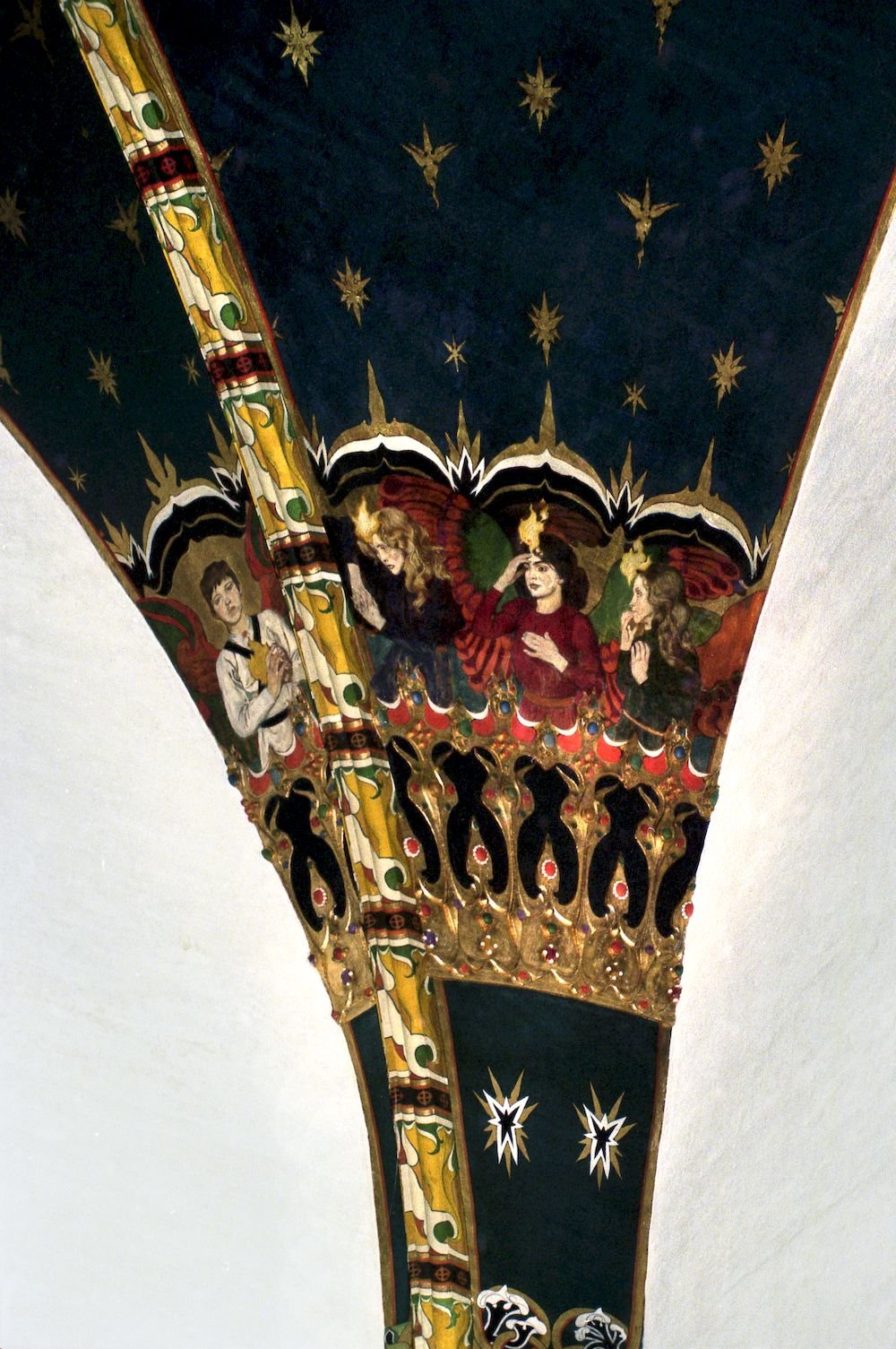The Geniuses of the cathedral Treasury
04.10.2022-01.01.2023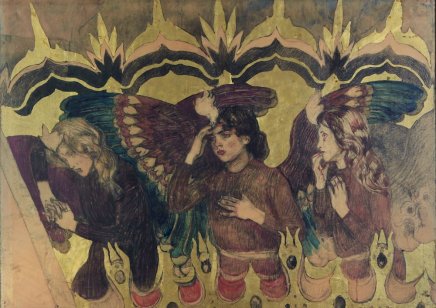
The Cathedral Treasury at Wawel Castle is a Late Gothic, three-bay structure with a rib-vault ceiling, constructed in the late 15th century, adjacent to the Cathedral on the northeast side. Since that time, it has been a place for storing precious historic objects of national significance such as sacred relics, priestly regalia, and other ceremonial items.
In the spring of 1900, as part of the restoration of the Wawel Cathedral which had been in progress for the previous five years, work was begun on the Treasury. Several months later, the architect Sławomir Odrzywolski, director of the restoration works, and Bishop of Kraków Jan Puzyna took the decision to entrust the painted decoration of the Treasury to Józef Mehoffer, a recognised artist of the new generation and winner of two gold medals at the 1900 Paris Exposition.
Mehoffer began work in March of 1901 by creating polychrome decorations on the ceiling, continuing until the end of 1902. However, the project was never completed. A rich ornamental and figurative decoration covered the walls of the Treasury with the exception of four large planes, one in the pointed arch of the western wall and in three of the pointed arches of the southern wall, which the artist intended to use to illustrate important scenes from the history of Poland.
Work on the polychrome decorations was abandoned due to the controversy raised by the stylistic choices and themes of the parts already completed, which represented a completely new approach to monumental art in line with the aesthetics of the Young Poland and Art Nouveau period.
Particularly harsh criticism of Mehoffer’s work was expressed by Count Karol Lanckoroński, who advocated maintaining stylistic unity in the renovated cathedral in his pamphlet Nieco o nowych robotach w Katedrze na Wawelu (A Few Words about the New Works at the Wawel Cathedral), published in Vienna in 1903.
Józef Mehoffer’s polychrome decorations in the Cathedral Treasury are characterised by a wealth of forms and intensity of the lively colours used. The walls are covered in stylised plant motifs mainly with a continuous structure, inspired by patterns originating in folk art, but interwoven with heraldic elements and medieval ornamental stylings.
On the northern wall, next to the two large windows, there are two archangels, Michael and Gabriel, dressed in garb which is in part based on the costumes of the Polish nobility and in part on peasants’ clothes. Along the ceiling runs a frieze with pairs of angels undoubtedly inspired by traditional Christmas nativity scenes.
The highly expressive figurative compositions in the lower parts of the ceiling, on the spaces above the rib supports, represent the ‘geniuses of the nation’. It is from this group of images that the design Geniusze (II) originates; an image of three delicate girlish figures lost in thought which, like the other ‘geniuses of the nation’, are winged and have tongues of flame on their foreheads.
In this part of the polychrome decoration, the artist intended to portray the Enthralled Angels; the design for this never-to-be-completed project is also presented in the exhibition along with several designs for the polychrome decorations which are normally part of the permanent exhibition at the artist’s home.
Ultimately, the compositions which were implemented with the ‘geniuses of the nation’ were figures at once both spiritual and human which, in line with Mehoffer’s intentions, “embody the feelings which arise in people after painful experiences”. The ideological context in which they are set is the 19th-century history of Poland, Polish Romanticism, and the messianic ideas which were strongly rooted in it, according to which the ‘salvation’ of the nation was to be achieved through painful experiences and suffering. Mehoffer’s treatment of this subject is an expression of the Neoromantic tendencies which were prevalent at the turn of the century and of the influence of the views voiced by the philosopher Wincenty Lutosławski, proponent of the idea of Polish messianism.
Beata Studziżba-Kubalska
Curator/coordinator – Beata Studziżba-Kubalska
Artistic arrangement – Ewa Morzyniec
MNK The Mehoffer
ul. Krupnicza 26, 31-123 Kraków a display of Józef Mehoffer’s design from the collections of the Mazovian Museum in Płock- Monday: closed
- tue: 10.00-18.00
- wednesday-sunday: 10.00-16.00
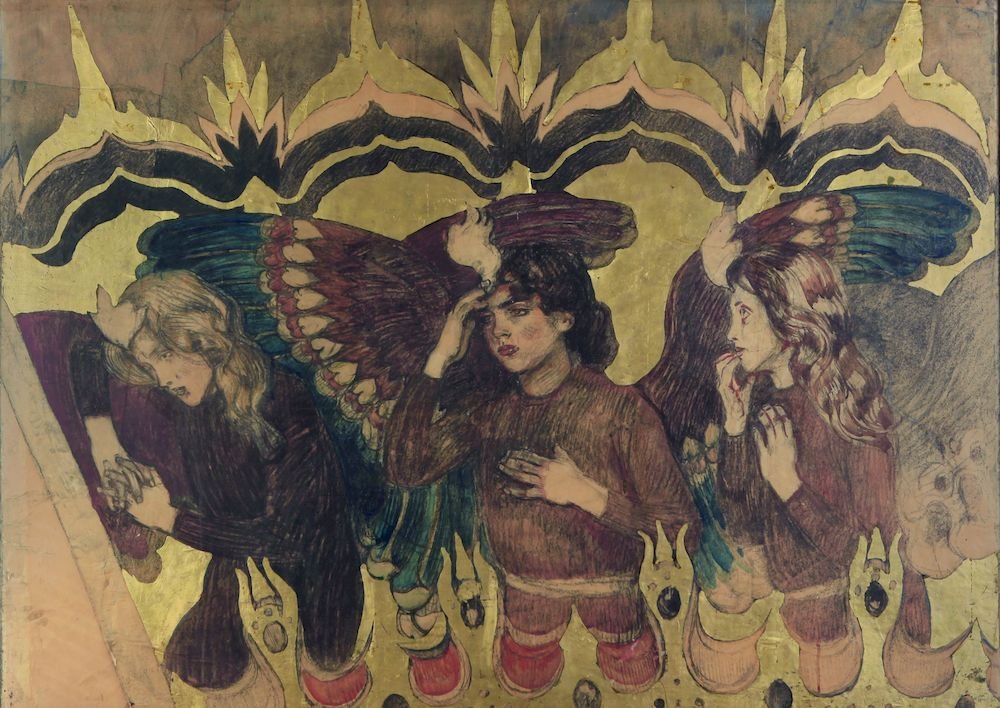
unrealized design for the part of the Wawel Cathedral Treasury polychrome decoration
tempera, casein, plaster
National Museum in Krakow
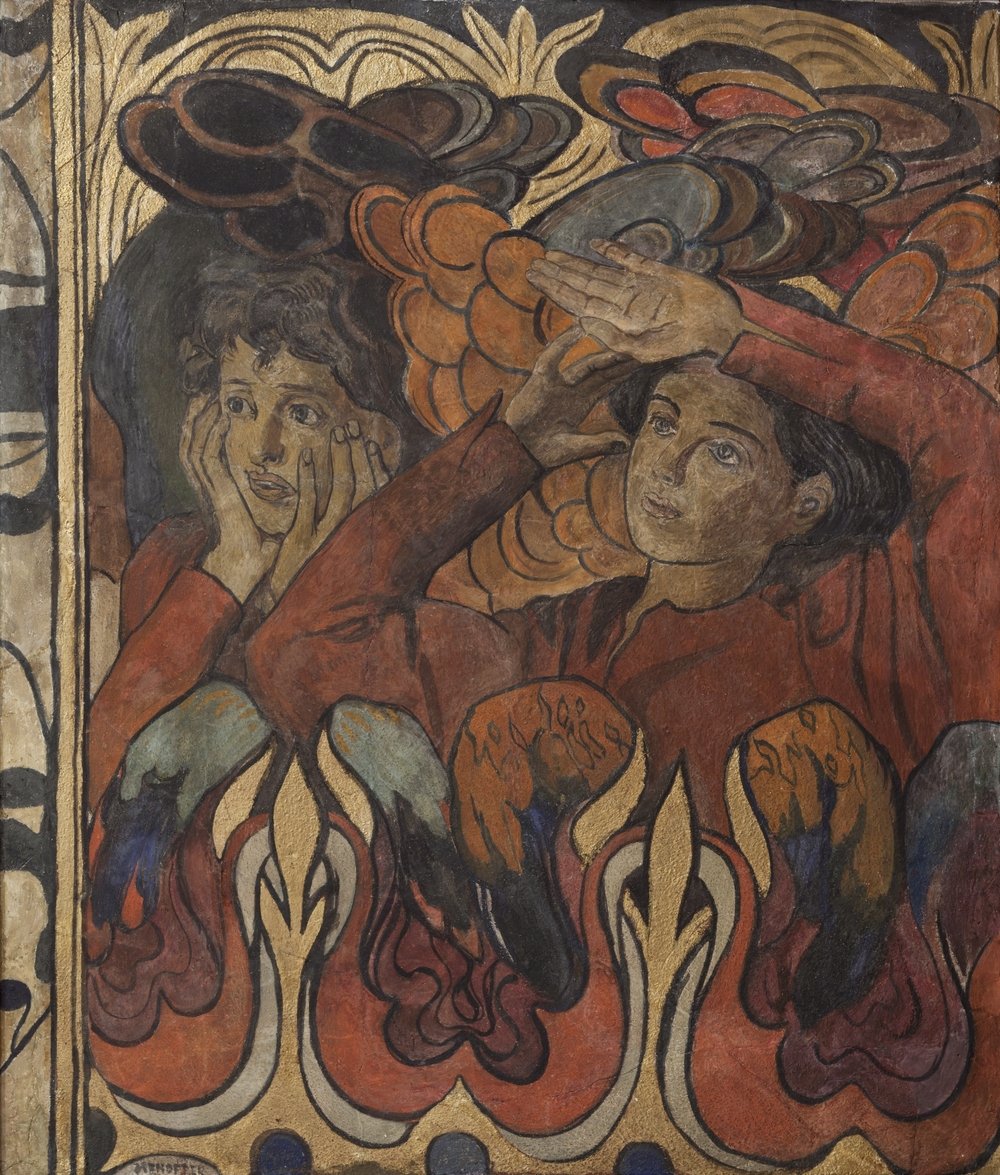
cartoon for the Wawel Cathedral Treasury polychrome decoration
watercolours on paper on canvas
National Museum in Krakow

cartoon for the Wawel Cathedral Treasury polychrome decoration
watercolours on paper on canvas
National Museum in Krakow
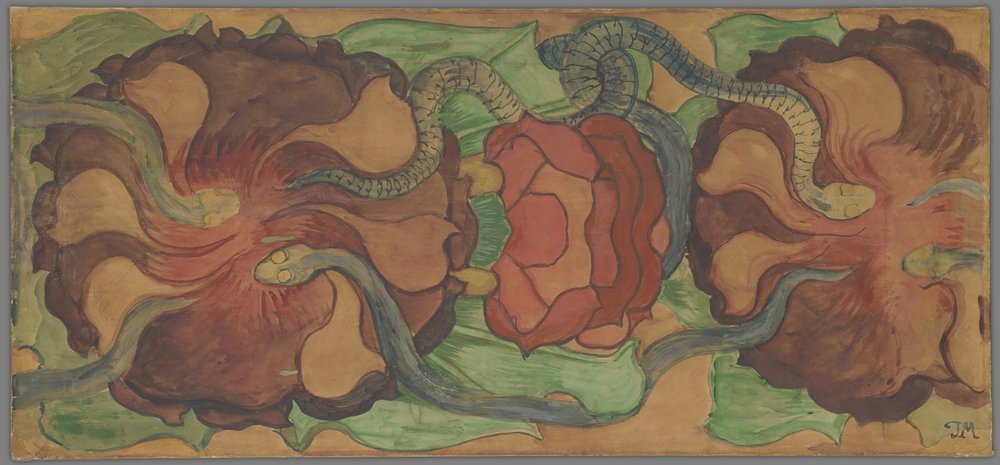
cartoon for the Wawel Cathedral Treasury polychrome decoration
watercolours on paper on canvas
National Museum in Cracow
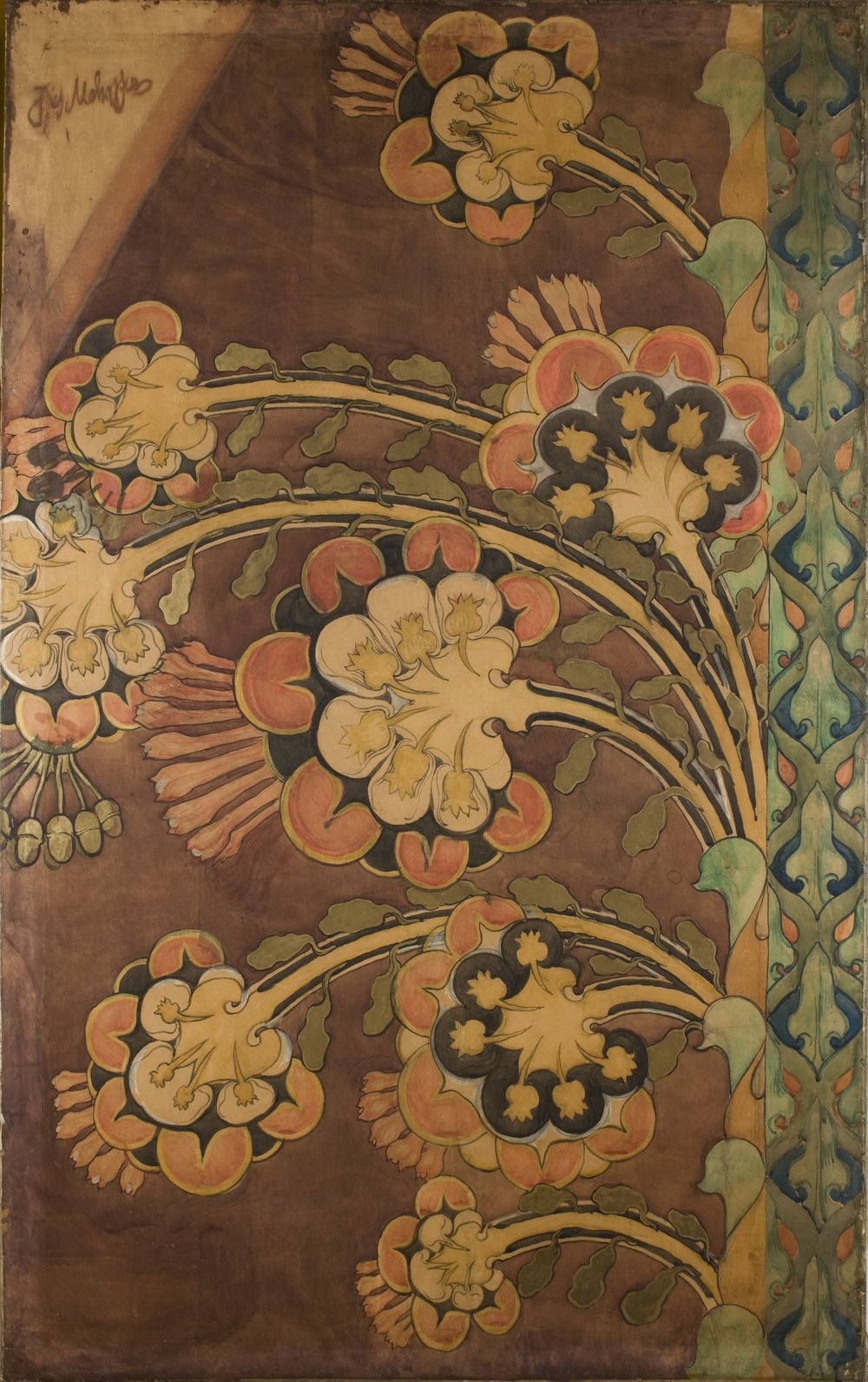
Fragment of the northern wall decoration with the figures of the Archangel Gabriel and the Archangel Michael / Photo Janusz Kozina
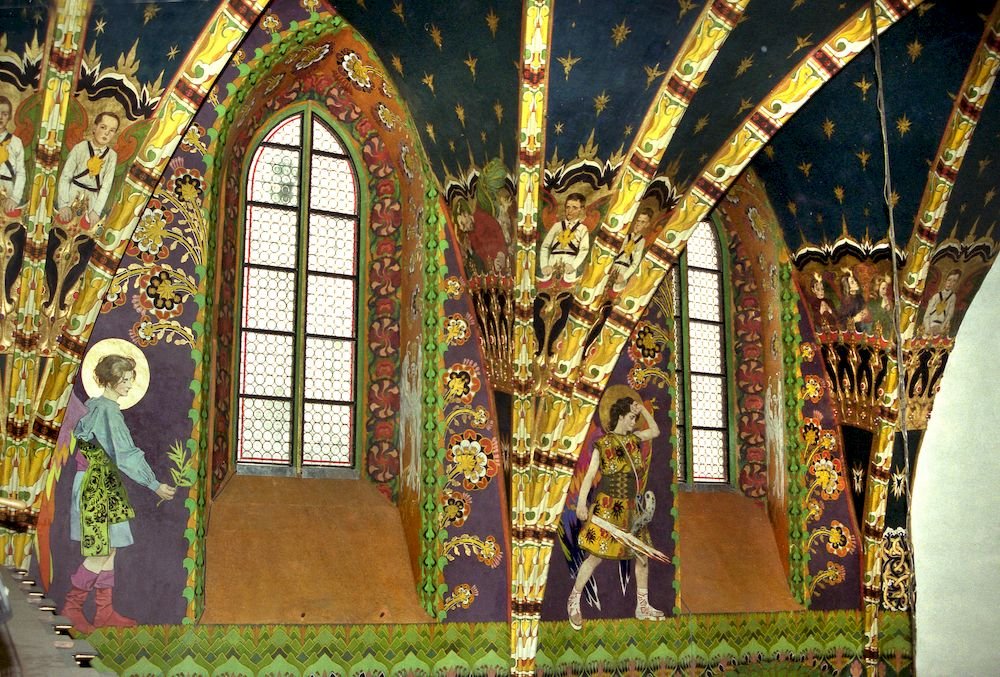
Fragment of the ceiling decoration with the Geniuses (II) figures / Photo Janusz Kozina
